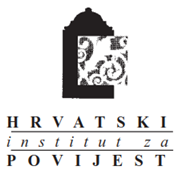FRANJO TUĐMAN AND DEMOGRAPHIC REVITALIZATION / SUSTAINABILITY OF CROATIA
DOI:
https://doi.org/10.22586/review.v17i1.13382Keywords:
Franjo Tuđman, Croatia, depopulation, demographic revitalization, demographic sustainabilityAbstract
According to a number of relevant demographic and statistical indicators, Croatia is in a deep demographic crisis in all aspects of demographic dynamics and structural-demographic development. Total depopulation, natural decline, negative migration balance, demographic aging, and spatial polarization of the population – are fundamental long-term and current demographic trends and processes that, thanks to available data from census, vital and migration statistics can be monitored almost continuously from the middle of last century until today. The current demographic picture of Croatia is marked by natural and mechanical population losses, which means more deaths from birth and more emigration than immigration, with significantly disturbed relations between large (functional) age groups that threaten further collapse of bio reproductive potential and economic activity of the population. Croatian demographers warned of this circumstance during socialist Yugoslavia, especially after reaching independence in 1991. In their research, they were especially committed to the design and implementation of active and stimulating population policies, which had a certain impact in the formation of some decisions and documents of Croatian state policy during the 1990s. In this sense, it is scientifically relevant to valorize Dr. Tuđman’s attitude towards Croatian demographic issues, because demographic challenges have been and still are in significant discrepancy with socially desirable demographic pro-cesses and trends as key factors in the development and progress of the Croatian state and society, especially from 1991 and onwards. Therefore, in the context of Tuđman’s work as a politician (president of the Croatian Democratic Union from 1989 to 1999) and statesman (president of the Republic of Croatia from 1990 to 1999), but also as a scientist and public figure (director of the Institute for the History of the Labor Movement from 1961 to 1967) it is useful to investigate whether and to what extent there is a consistent attitude towards the demographic situation and problems of Croatia and, accordingly, whether we find the issue of Croatian demography at the center or on the margins of interest in his public work.
Downloads
Published
How to Cite
Issue
Section
License
Copyright (c) 2021 Copyright holders are the publisher Croatian Institute of History and the authors.

This work is licensed under a Creative Commons Attribution-NonCommercial 4.0 International License.
The copyright holders are the Croatian Institute of History (as the publisher) and the authors.
The Review of Croatian History is an open-access journal. Its contents are freely accessible in their entirety. Users may read, download, copy, distribute, print, search, or put links to its material, and to change, reword, and process the material or use it in other legal ways, as long as they cite the original in the appropriate manner, in accordance with the Creative Commons licence CC BY-NC.
Works published in the Review of Croatian History may be deposited in institutional or thematic repositories, as long as the appropriate links to the web pages of the Journal and Hrčak (central portal of Croatian scientific journals) are made available.
The self-archiving policy is indexed in the Sherpa/RoMEO database, where it is visible that the journal allows the depositing of unreviewed (pre-print), reviewed (post-print), or publisher’s versions of the work.


